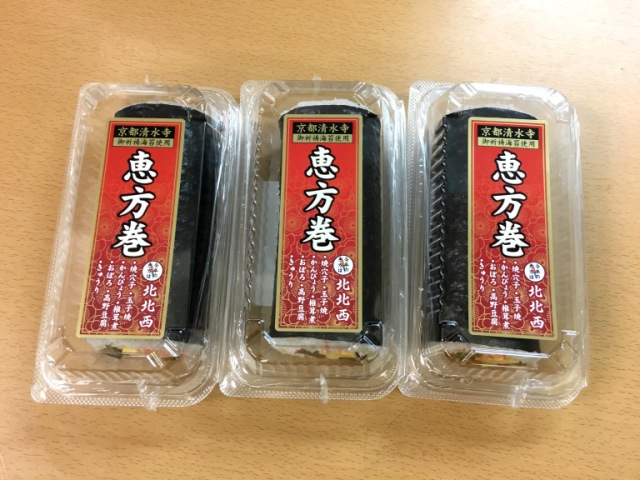
A brief lesson in eho-nomics.
Another Setsubun is behind us and hopefully everyone in Japan was able to enjoy the many delicious ehomaki sushi rolls sold during the holiday, fully loaded with all kinds of good stuff. Anyone who didn’t really has no excuse either, because according to a study by journalist and food-loss expert Rumi Ide, there was absolutely no shortage this year.
In fact, in a survey of 85 businesses who sold ehomaki Ide’s team found that the number of unsold sushi skyrocketed from 216 rolls in 2021 to 1,508 in 2022. When projecting these numbers to all ehomaki dealers in Japan, that would amount to 1,396,443 rolls, valued at approximately 1,029,170,000 yen (US$8.9M).
▼ We shudder to think how ehomaki wrapped in gold might sway the estimate.
The method of counting in this survey considered each package as “one ehomaki” even if the package contains two or three rolls. Given that, it’s probably safe to say this is a rather conservative estimate, but why are businesses eager to toss away so much food and money?
The manager of one major supermarket told Ide that they usually make sure to have more than needed because the financial loss of sushi disposal is considered less damaging than the negative effects of turning away customers when sold out.
It’s also worth noting that the ehomaki tradition is relatively new in parts of Japan outside of the Kansai region, where it originated. It has only begun to really catch on in certain places in recent years, so demand can be very hard to gauge, and even harder recently with the COVID-19 pandemic and associated states of emergency disrupting consumer habits in unprecedented ways.
▼ Before the pandemic Kansai natives like our own Seiji Nakazawa had been hard at work spreading the ehomaki gospel all over Japan
However, this problem extends far beyond economics. For starters, there’s the clear tragedy of so much valuable food going to waste while many people are struggling to eat. In addition, using Ministry of Agriculture, Forestry and Fisheries data, Ide calculated that a single ehomaki requires roughly 120 liters (32 gallons) to make and has a carbon footprint of about 528 grams (19 ounces).
Therefore, Ide’s estimated million-plus loss of sushi rolls would amount to 166,870,000 liters (44,000,000 gallons) of completely wasted water – enough to fill 154 Olympic sized swimming pools. The total carbon footprint of this single day’s wasted ehomaki would amount to 737 tons, which is equivalent to the amount emitted by 86 average Japanese people over the course of an entire year.
Clearly nothing good is coming of this, so the question remains how to combat this problem. The Ministry of Agriculture, Forestry and Fisheries sent out an advisory to businesses regarding this problem, and one supermarket that followed their guidelines, managed to reduce their ehomaki waste to a miniscule 0.16 percent. But it will likely take time for others to adopt the guidelines, if at all, and as the supermarket manager told Ide, they will always err on the side of excess.
An order-made reservation system enjoyed by other seasonal foods like Christmas cake or New Year’s osechi meal boxes would be effective at mitigating waste. However, unlike those foods, most people go for ehomaki that are sold for under 1,000 yen (US$8.67), so they aren’t considered high-end enough for such an effort.
▼ Not everyone can afford a Matsusaka beef and truffle salt ehomaki like Mr. Sato
As a result of her full analysis, Ide’s final recommendation for consumers is to buy their ehomaki from specialized sushi shops. Convenience store chains tend to make up the bulk of wasted ehomaki, followed by supermarkets. Sushi-centric businesses like restaurants, however, are in a very distant third place in terms of waste, likely because they have a far better sense of demand in their local areas. In this way, sushi fans can further push all businesses onto the right track by spending money on those who don’t waste. This also has the added benefit of supporting local businesses and in all likelihood getting better quality ehomaki as a result.
Another option is to have fun making your own ehomaki at home. We tried it here at the office and it was… Well, we still think it’s a great idea. Whatever you do, just don’t give up on the tradition of excellent tasting ehomaki sushi rolls on Setsubun, because that truly would be a waste.
Source: Yahoo! Japan News, Hachima Kiko
Photos ©SoraNews24
● Want to hear about SoraNews24’s latest articles as soon as they’re published? Follow us on Facebook and Twitter!